1. American Alligator: The Swamp King
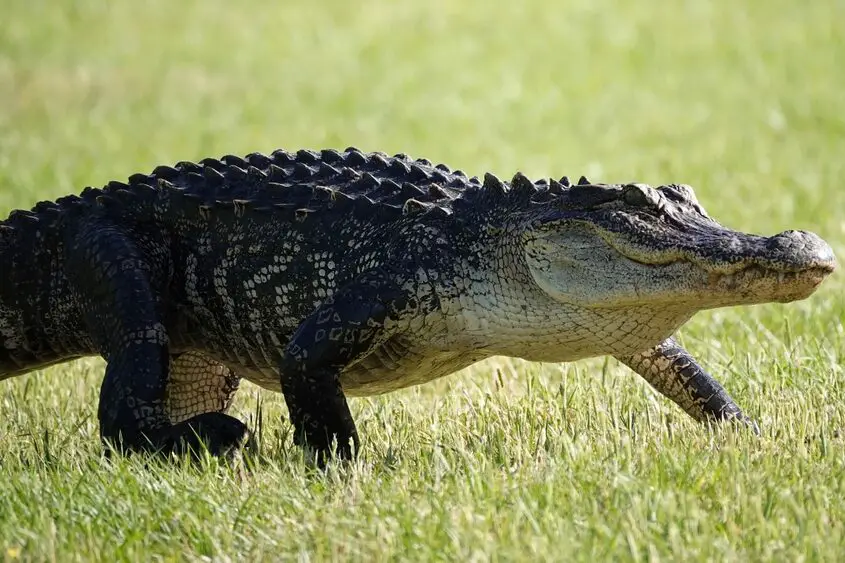
According to National Geographic, the American alligator is a legendary predator, ruling the wetlands of the southeastern United States with stealth and power. These reptiles, often referred to as “living fossils,” have existed for over 150 million years, surviving extinction events that wiped out the dinosaurs. Found in swamps, marshes, and rivers, their muscular tails and armored bodies make them adept swimmers and apex predators. Beyond their fearsome appearance, alligators play a vital ecological role by creating “gator holes” that provide water for other animals during dry seasons. Female alligators are dedicated mothers, guarding their nests and staying with their hatchlings for months after birth.
Once nearly hunted to extinction, alligators have made a remarkable comeback thanks to conservation efforts. Watching one silently glide through murky waters is a mesmerizing experience, showcasing their ancient and formidable grace. Despite their reputation, they are unlikely to bother humans unless provoked, making it essential to respect their space. They also help control populations of fish and small mammals, maintaining balance in their ecosystems. Encountering an alligator in the wild is a reminder of North America’s rich biodiversity. These prehistoric predators continue to awe scientists and nature enthusiasts alike, standing as symbols of resilience and adaptability.
2. North American Beaver: Nature’s Engineer
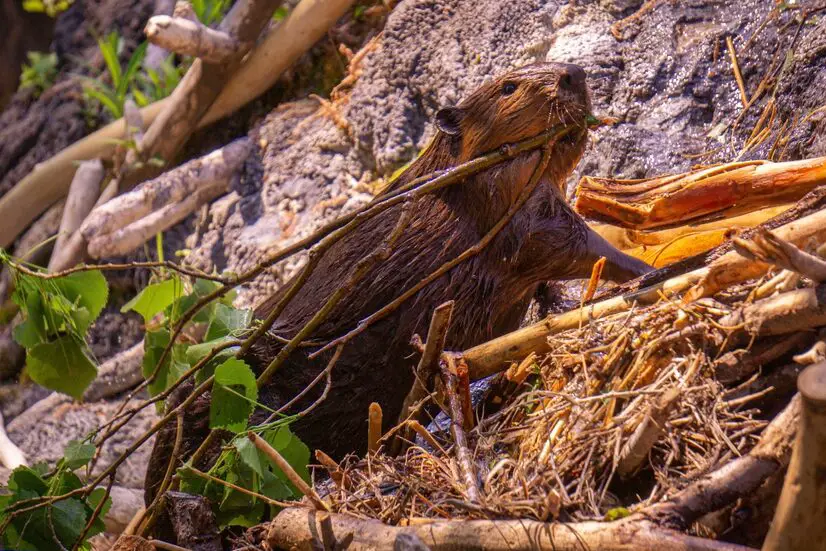
Known for their incredible dam-building skills, the North American beaver is a true architect of the wild. These industrious rodents are found across rivers, streams, and lakes, where they use sticks, mud, and stones to create lodges and dams. Their iconic flat tails serve multiple purposes, from steering while swimming to delivering loud warning slaps on the water. Beavers are a keystone species, as their dams create wetlands that support countless other creatures, from fish and amphibians to birds. These wetlands also help filter water and reduce erosion, showcasing the beaver’s environmental significance.
Beyond their ecological contributions, beavers are social animals that live in tight-knit family groups. They work together with their kits to expand their lodges, demonstrating remarkable teamwork. Once hunted to near extinction for their valuable fur, beavers have bounced back due to conservation efforts. Watching a beaver at work is like seeing nature’s construction crew in action, tirelessly reshaping their surroundings. Their powerful, ever-growing teeth are designed for gnawing through wood, a testament to their unique adaptations. Beavers remind us of how interconnected ecosystems are, with their actions benefiting entire habitats. Their story is one of resilience, ingenuity, and the profound impact of even the smallest creatures.
3. Bald Eagle: The Majestic Icon
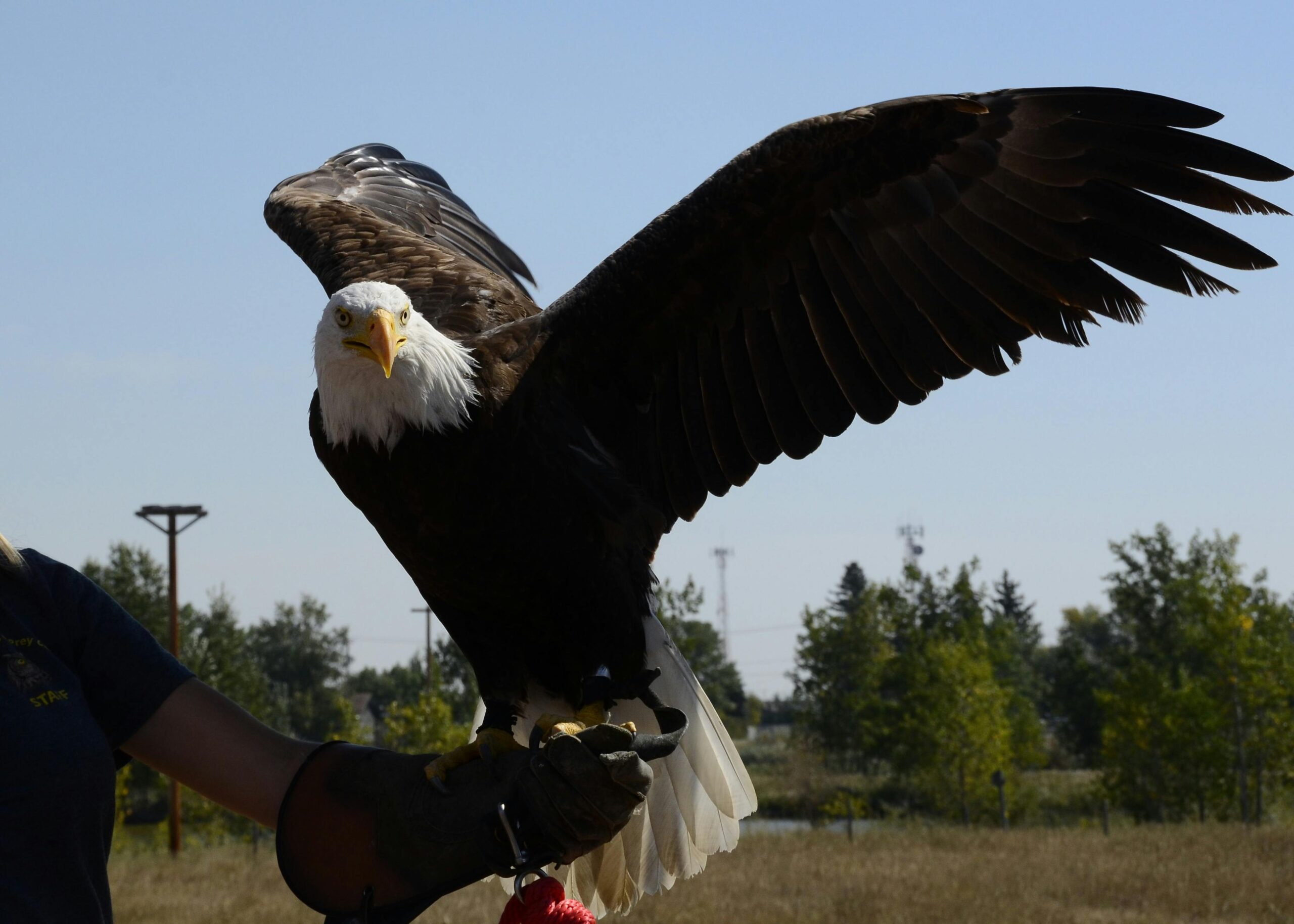
The bald eagle is an enduring symbol of freedom and strength, instantly recognizable with its snowy white head, dark body, and piercing yellow eyes. Found near lakes, rivers, and coastal regions, these birds are expert hunters, diving at incredible speeds to snatch fish with their sharp talons. They build enormous nests called aeries, which can weigh over a ton and grow larger each year. Despite their iconic status, bald eagles faced devastating population declines during the mid-20th century due to habitat destruction and pesticide use. Their recovery, aided by strict conservation measures, is one of the greatest wildlife success stories.
Spotting a bald eagle soaring through the sky is an awe-inspiring experience, evoking a sense of wild beauty and resilience. These raptors are not just skilled hunters—they’re also devoted partners, often mating for life. Their haunting calls echo through the wilderness, adding to their majestic allure. Watching a bald eagle catch prey or perch on a towering tree is like witnessing nature’s royalty in action. These birds remind us of the importance of conservation and the incredible recoveries that are possible with dedication. They continue to captivate and inspire, embodying the spirit of North America’s untamed landscapes.
3. American Bison: The Gentle Giants
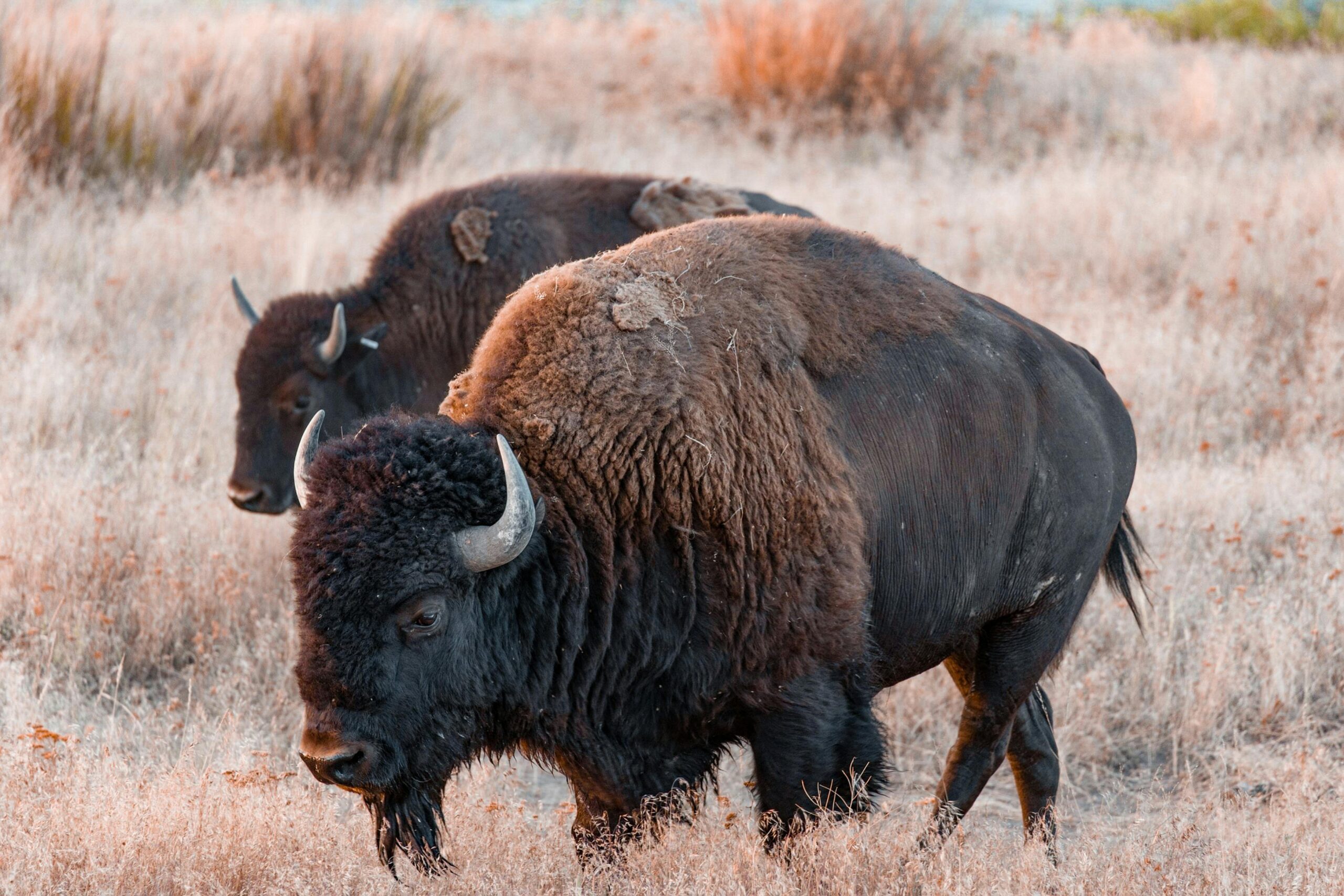
The American bison, often called buffalo, is an enduring symbol of the Great Plains and one of North America’s most iconic mammals. These massive creatures, weighing up to 2,000 pounds, once roamed the continent in herds numbering in the millions. Their thick fur, humped shoulders, and curved horns make them uniquely suited for harsh prairie winters. Bison were integral to Indigenous cultures, providing food, clothing, and tools, while also holding spiritual significance. Sadly, overhunting and westward expansion in the 19th century nearly drove them to extinction.
Today, thanks to conservation efforts, bison have made a remarkable recovery and can be seen in parks like Yellowstone. Watching a bison graze or stampede across a grassy plain is like stepping back in time to North America’s untamed past. Their powerful builds and gentle grazing habits help maintain prairie ecosystems by promoting plant diversity. Despite their calm appearance, bison can run up to 35 mph and are highly protective of their young, so observing them from a safe distance is essential. These magnificent creatures remind us of the resilience of nature and the importance of preserving wild spaces. The American bison’s story is one of hope, survival, and the enduring spirit of the wild.
5. Gray Wolf: The Pack Leader
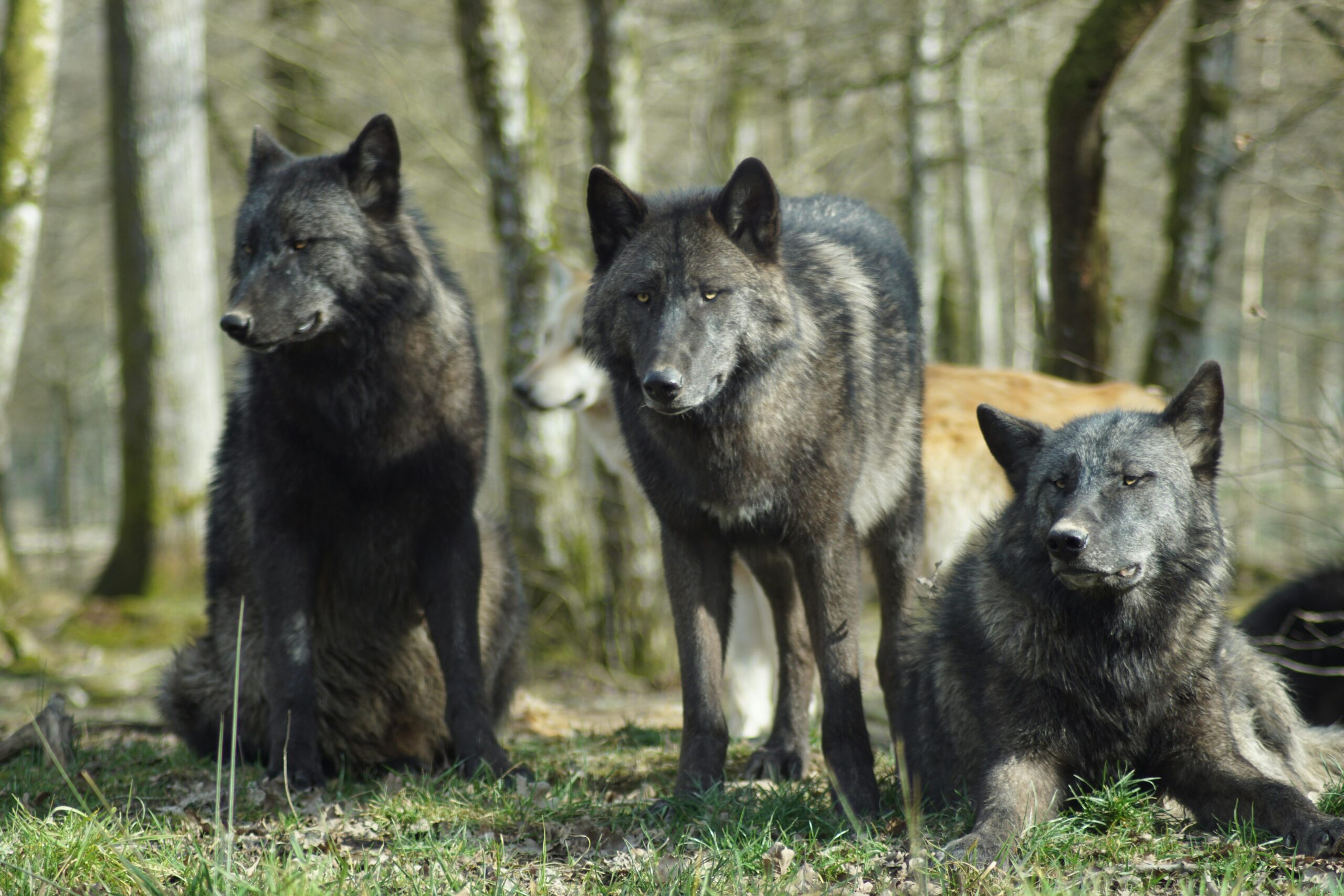
The gray wolf is a symbol of wilderness and the top predator in many North American ecosystems. Known for their intelligence and complex social structures, wolves live in tight-knit packs led by an alpha pair. These apex predators are critical to controlling prey populations like deer, which helps prevent overgrazing and supports ecological balance. Their haunting howls serve as both communication and territory marking, adding a mystical element to the wilderness. Despite their importance, wolves were hunted nearly to extinction in the 20th century, leading to their absence in many regions.
Reintroduction programs, like the one in Yellowstone National Park, have shown how wolves can restore entire ecosystems. Watching a wolf pack in action—whether hunting, playing, or traveling—is a captivating display of teamwork and strategy. Wolves are also incredibly adaptive, surviving in environments ranging from forests to tundras. They’re often misunderstood and feared, but education and conservation efforts are slowly shifting public perception. The gray wolf’s resilience and role as a keystone species make them a fascinating part of North America’s wildlife. Their story highlights the delicate balance of nature and the power of restoration.
6. Cougar: The Silent Stalker
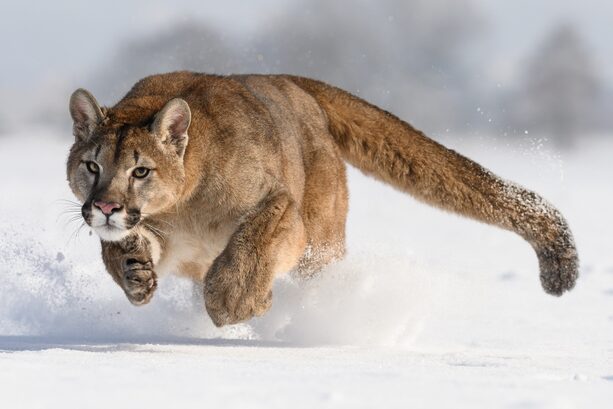
Cougars, also known as mountain lions or pumas, are stealthy predators that roam the forests, mountains, and deserts of North America. With their sleek bodies and powerful limbs, they can leap great distances and sprint at high speeds to ambush prey. These big cats are solitary and highly adaptable, thriving in various habitats from the Canadian Rockies to the swamps of Florida. Despite their elusive nature, cougars are vital in controlling deer populations and maintaining balance in their ecosystems.
Encounters with cougars are rare but leave a lasting impression due to their quiet strength and grace. They’re masters of camouflage, often blending seamlessly into their surroundings while stalking prey. Mothers are fiercely protective, teaching their cubs essential survival skills until they’re ready to live independently. Human expansion has forced cougars into closer contact with people, but they usually avoid confrontation unless threatened. Understanding their behavior helps mitigate conflicts and ensures coexistence. The cougar’s mysterious allure and adaptability make it one of North America’s most fascinating predators. They remind us of the beauty and power hidden within the wilderness.
7. California Condor: The Sky’s Giant
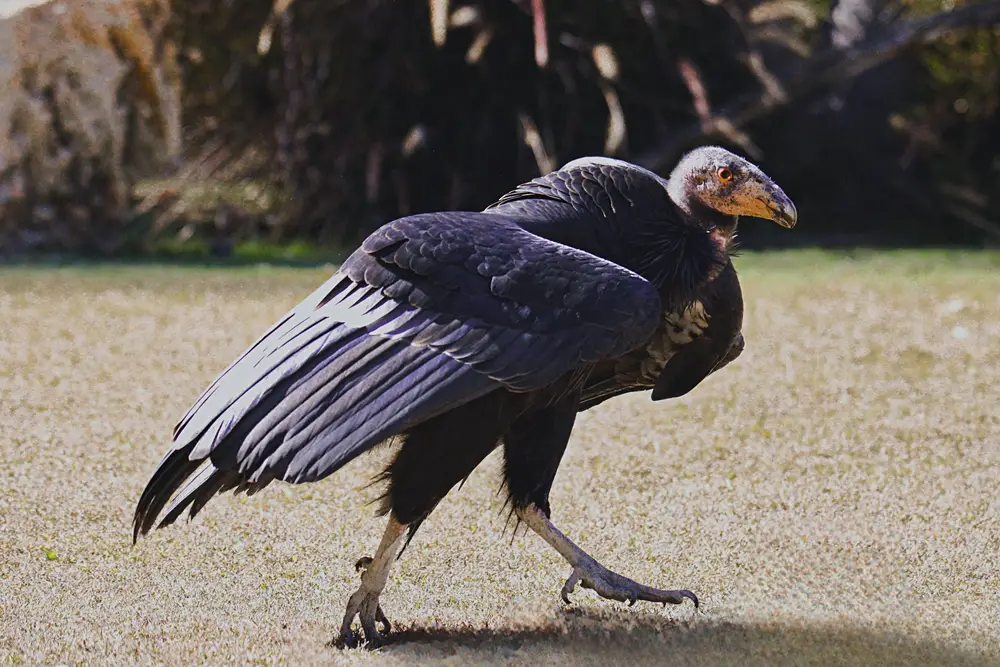
The California condor is North America’s largest bird, boasting a wingspan of nearly 10 feet. These majestic scavengers were once on the brink of extinction, with only 27 individuals remaining in the wild during the 1980s. Thanks to dedicated conservation efforts, their numbers have climbed steadily, and they can now be spotted soaring over the Grand Canyon and California’s rugged cliffs. Condors feed on carrion, playing a vital role in cleaning up ecosystems and preventing the spread of disease. Their bald heads, an evolutionary adaptation, help them stay clean while feeding.
Watching a condor glide effortlessly through the sky is an unforgettable experience. These birds can travel over 150 miles in a single day, searching for food. Despite their recovery, they face ongoing threats from lead poisoning and habitat loss. Their story is a powerful reminder of humanity’s ability to bring species back from the brink of extinction when effort and care align. Condors are not just survivors; they’re symbols of hope and resilience. Their majestic presence adds a sense of wonder to North America’s landscapes. Seeing one in the wild feels like witnessing a living piece of history.
8. Roadrunner: The Speedy Desert Dweller
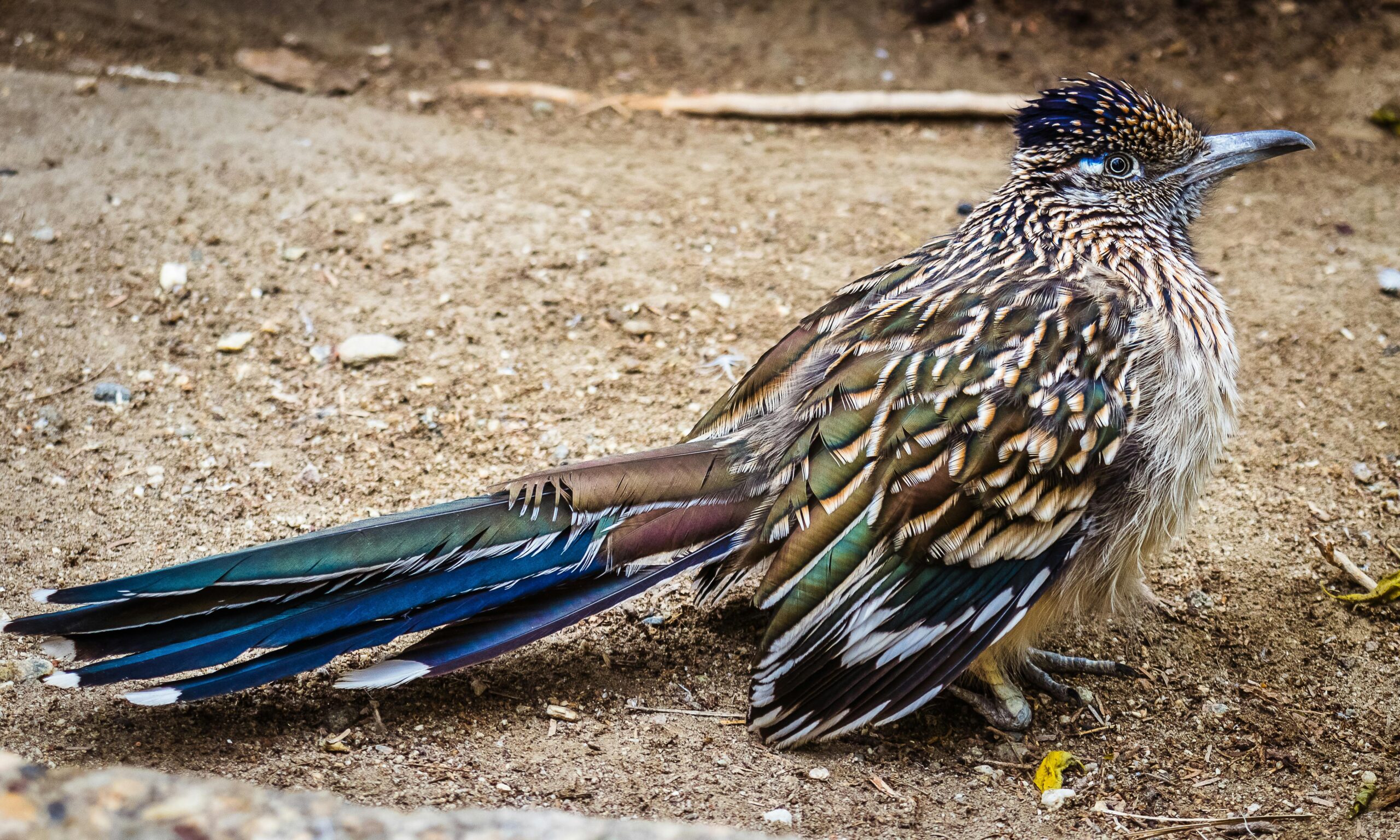
The roadrunner isn’t just a cartoon character—it’s a real-life marvel of the American Southwest. These speedy birds can run up to 20 mph, making them one of the fastest creatures on two legs. Known for their curious personalities, roadrunners often hunt small reptiles, insects, and even snakes. Their ability to adapt to arid desert conditions makes them iconic symbols of resilience in harsh environments. Watching a roadrunner dart across the landscape is like seeing a blur of energy in motion.
Despite their comical reputation, roadrunners are clever and resourceful hunters. They’re even known to team up to take down larger prey like rattlesnakes. These birds use their long tails for balance and their sharp beaks for precision. Roadrunners often become curious about humans, approaching cautiously but ready to sprint away at any sign of danger. Their quirky behavior and adaptability make them endearing ambassadors of the desert. They remind us that even in the most challenging environments, life can thrive in surprising and creative ways.
9. Grizzly Bear: The Mighty Forager
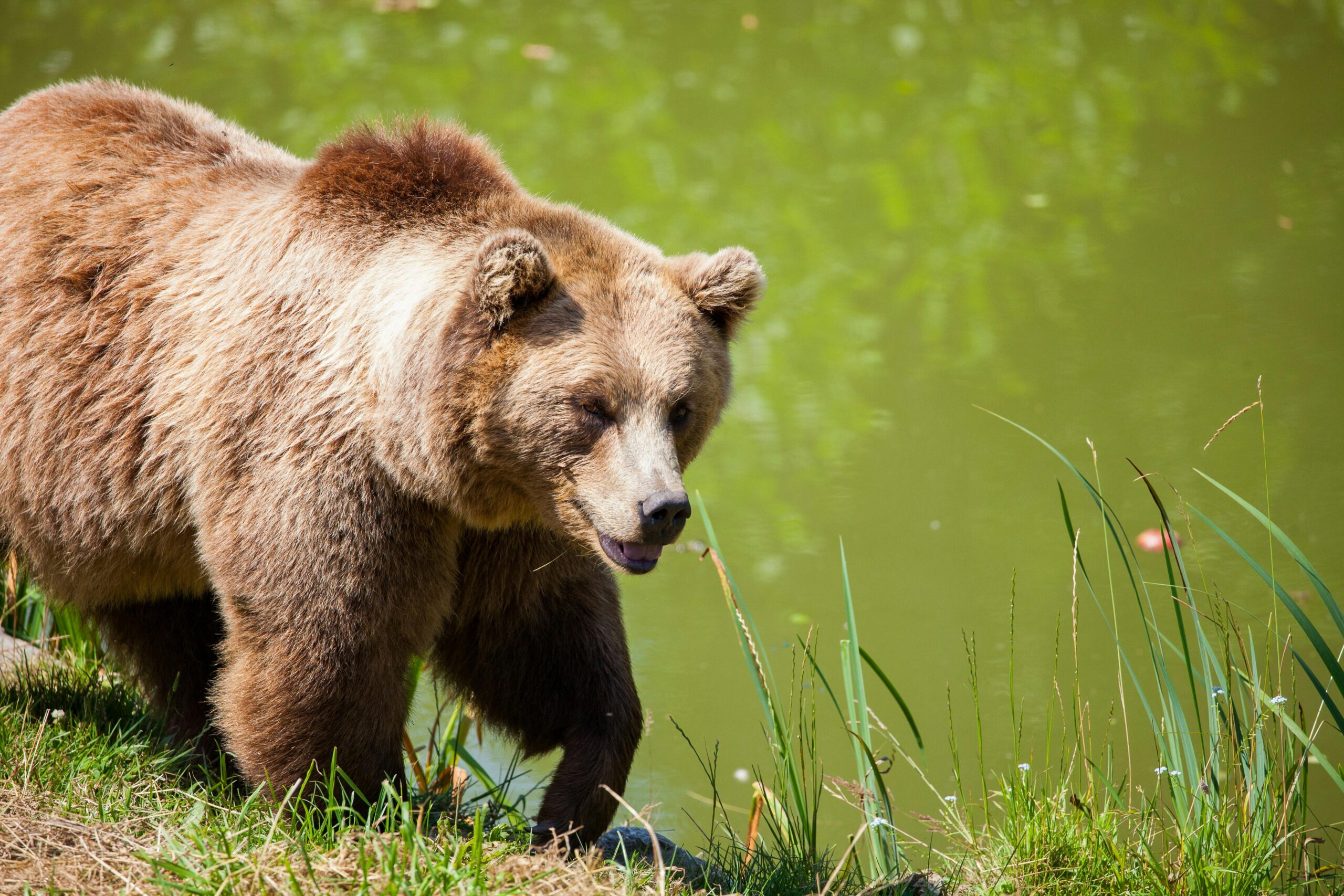
Grizzly bears are icons of the American wilderness, known for their immense size and strength. Weighing up to 1,500 pounds, they are skilled foragers, feeding on everything from berries and fish to small mammals. These bears play a vital role in their ecosystems by spreading seeds and maintaining predator-prey dynamics. Watching a grizzly roam through meadows or fish in streams is a breathtaking sight. Despite their powerful appearance, they are highly intelligent and display problem-solving abilities.
Grizzlies are solitary creatures but fiercely protective of their cubs, often teaching them survival skills for years. Human expansion has pushed these majestic animals into smaller habitats, but conservation efforts are helping to protect their populations. Observing a grizzly in the wild reminds us of nature’s raw beauty and power. They’re a symbol of untamed wilderness, embodying both strength and vulnerability. While awe-inspiring, grizzlies command respect, as their interactions with humans can become dangerous when habitats overlap. Coexisting with these magnificent creatures requires understanding and careful stewardship of their habitats.
10. Gila Monster: The Desert’s Hidden Jewel

The Gila monster is one of North America’s only venomous lizards, making its home in the arid deserts of the Southwest. With its striking orange-and-black patterns, it’s a creature you won’t forget if you’re lucky enough to spot one. These lizards are slow-moving but pack a punch with their venomous bite, used primarily for defense. They feed on eggs, small mammals, and birds, storing fat in their tails to survive lean times. Despite their fearsome reputation, Gila monsters are shy and rarely pose a threat to humans.
Seeing a Gila monster basking in the sun feels like discovering a hidden treasure of the desert. They’re incredibly well-adapted to their environment, with thick skin that helps retain moisture. Their unique venom has even inspired medical research, leading to breakthroughs in diabetes treatment. Protecting their habitats is crucial, as these fascinating lizards face threats from habitat destruction and illegal collection. The Gila monster’s story is one of resilience and adaptation, showcasing the beauty of evolution. Their mysterious charm and importance to desert ecosystems make them a true gem of North America.
11. Pronghorn Antelope: The Speedsters of the Plains
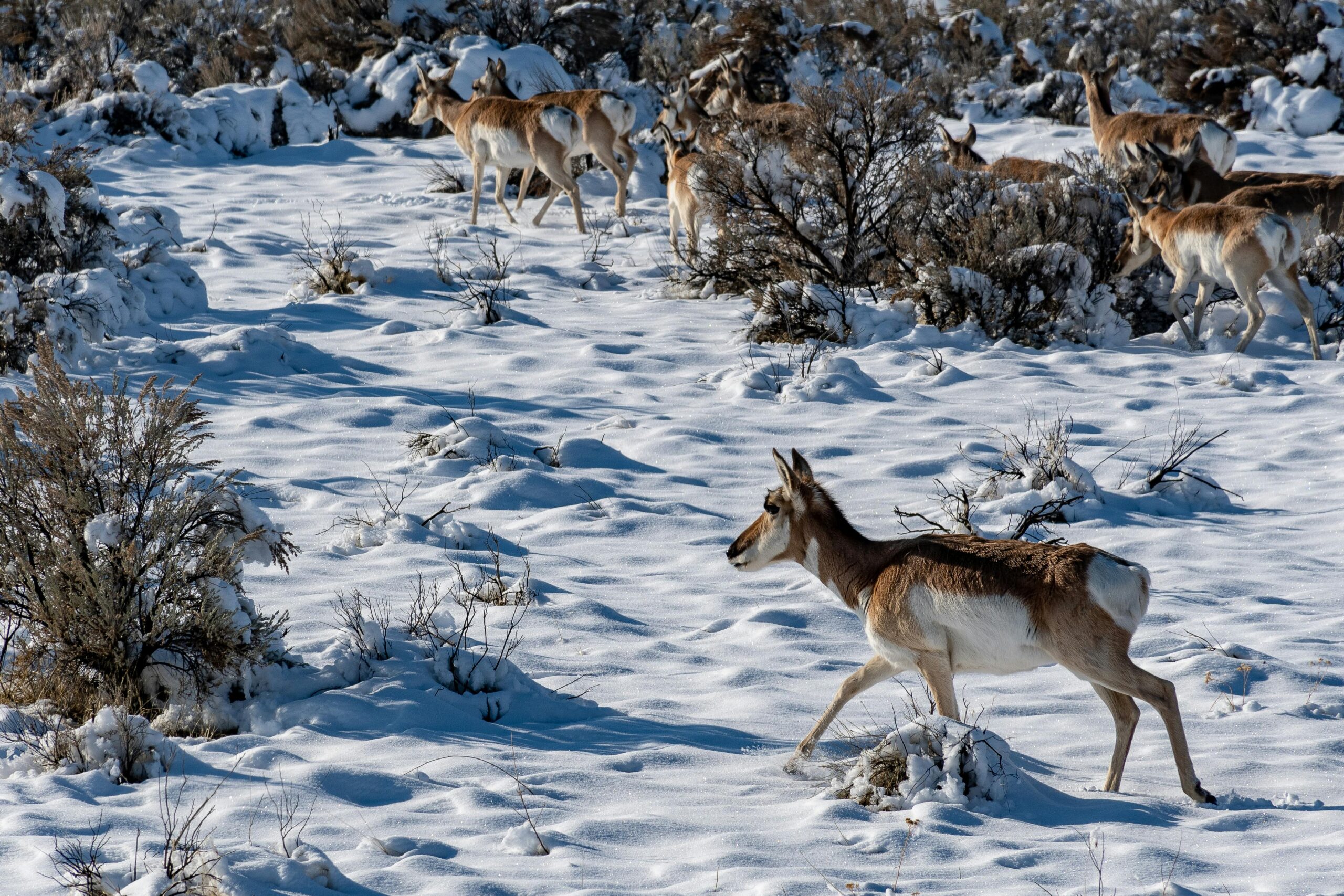
The pronghorn antelope is often dubbed the second-fastest land mammal in the world, capable of reaching speeds up to 55 mph. Native to North America, they are built for speed, with long legs and large lungs to fuel their rapid movements. These animals are not only fast runners, but they also have exceptional stamina, capable of maintaining high speeds over long distances. Pronghorns use their speed to evade predators like coyotes, and their agility allows them to perform sharp turns to avoid capture. Despite their prowess, they have a limited range of habitats in North America, primarily in the grasslands and deserts of the West.
What’s fascinating is that pronghorns have evolved without the presence of predators capable of chasing them at their speeds, which means their agility is purely an evolutionary advantage. Their striking brown and white coats help them blend into the terrain while they graze or keep watch for predators. These creatures also have excellent vision, enabling them to spot danger from miles away. They are social animals, often found in herds, and during migration, they are known to cover vast distances. While human expansion and development have affected their populations, pronghorns continue to thrive in the wild thanks to conservation efforts. Their speed and grace make them a wonder of the North American plains.
12. Musk Ox: The Arctic Survivors
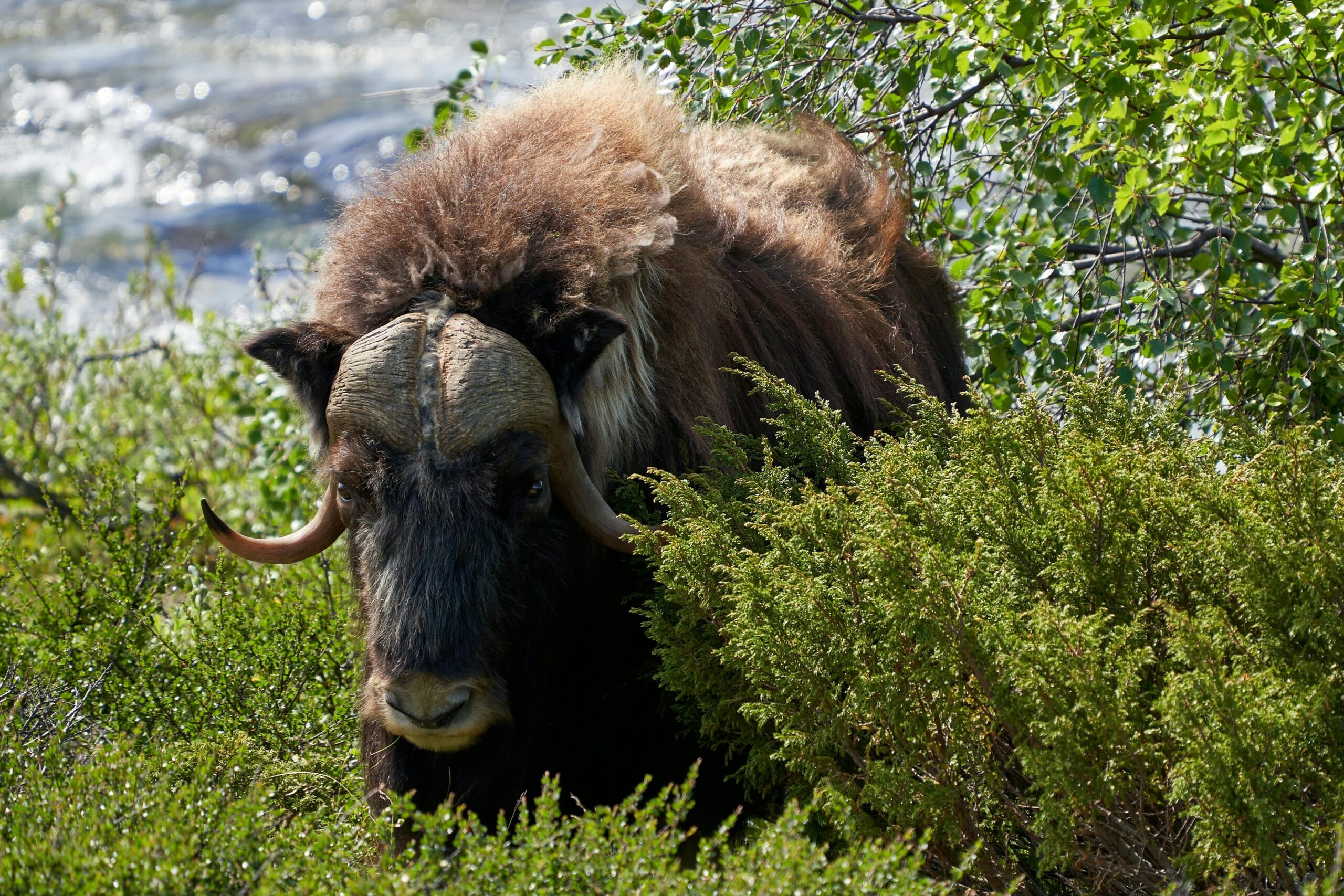
The musk ox is a living relic of the Ice Age, having survived for thousands of years in some of the harshest environments on Earth. Native to the Arctic regions of North America, these large, shaggy herbivores are built to withstand freezing temperatures. With thick coats of fur, musk oxen can stay warm even in the most extreme cold, and their sturdy hooves allow them to navigate snowy terrain with ease. They are known for their unique defense mechanism—a defensive circle—where they form a tight group with their heads facing outward to protect the young from predators.
Despite their intimidating appearance, musk oxen are peaceful creatures that graze on grasses, shrubs, and mosses. In the wild, they primarily rely on their herds for protection from wolves, which are among the few predators that target them. Their wool, called qiviut, is highly prized for its softness and warmth, making them a valuable resource for local communities. Musk oxen face threats from climate change, which is affecting their food sources and habitats in the Arctic. Conservation efforts are ongoing to ensure their survival in the rapidly changing environment. These ancient creatures remain symbols of endurance and strength in one of the world’s most unforgiving ecosystems.
13. Hummingbird: Nature’s Tiny Dynamo
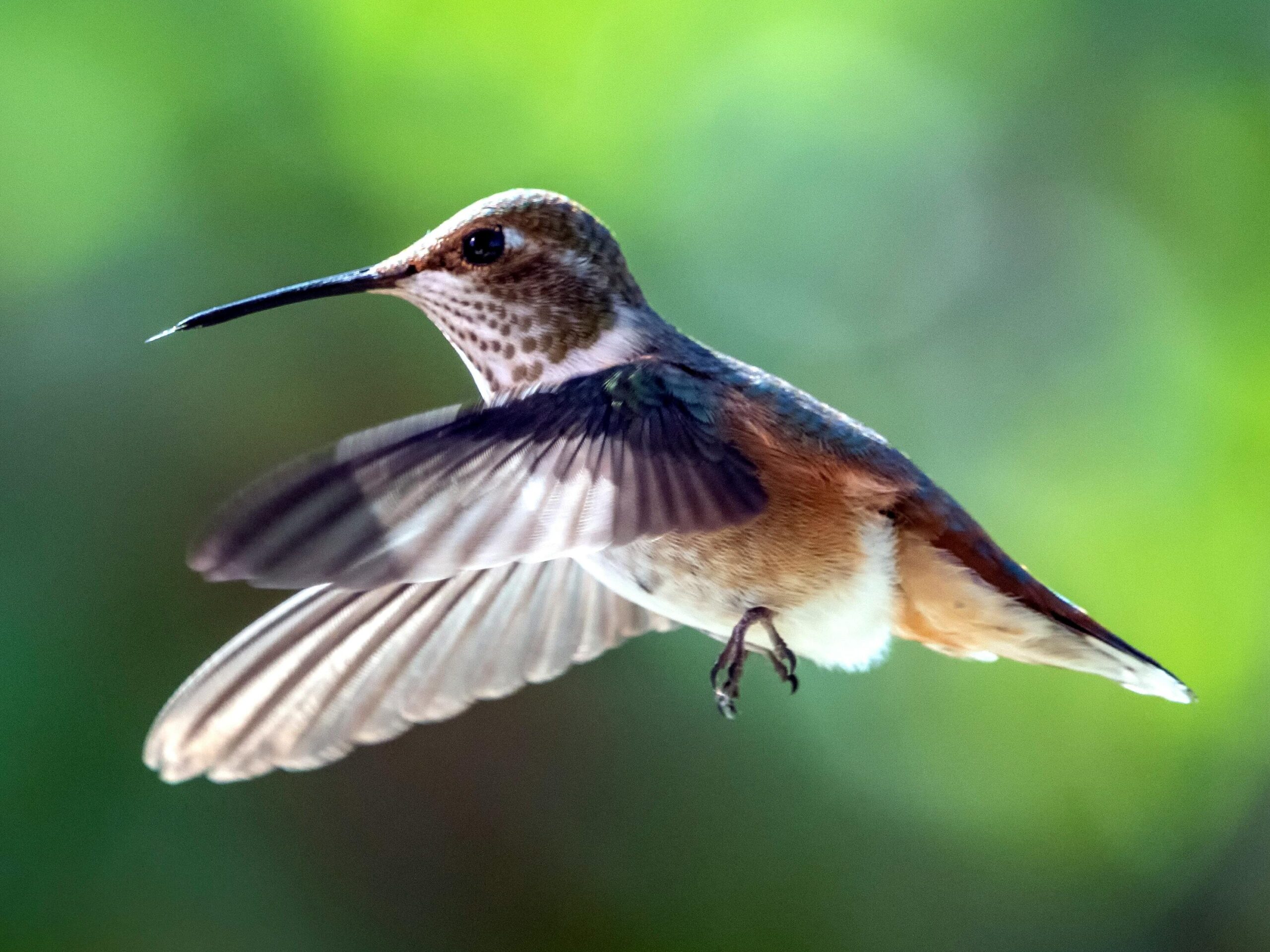
The hummingbird is North America’s smallest bird and one of its most fascinating creatures. These tiny birds are known for their incredible speed and agility, capable of hovering in place by rapidly flapping their wings at a rate of up to 80 times per second. Hummingbirds primarily feed on nectar, using their specialized bills and tongues to extract the sweet liquid from flowers. Their fast metabolism requires them to consume large quantities of food every day to sustain their high-energy lifestyle. They are also important pollinators, helping to fertilize plants as they move from blossom to blossom.
Despite their small size, hummingbirds play an important role in ecosystems by facilitating plant reproduction. Some species migrate long distances, traveling thousands of miles between their breeding grounds and winter habitats. During migration, they rely on a mix of instinct and environmental cues to guide their way. Observing a hummingbird in flight is like watching a living, flying jewel, its iridescent feathers shimmering in the sunlight. Their incredible abilities to maneuver and their striking colors make them a constant source of awe. Hummingbirds remind us that size doesn’t define power or importance in the natural world. They are truly one of nature’s tiny dynamos.
14. Desert Bighorn Sheep: Masters of the Mountains
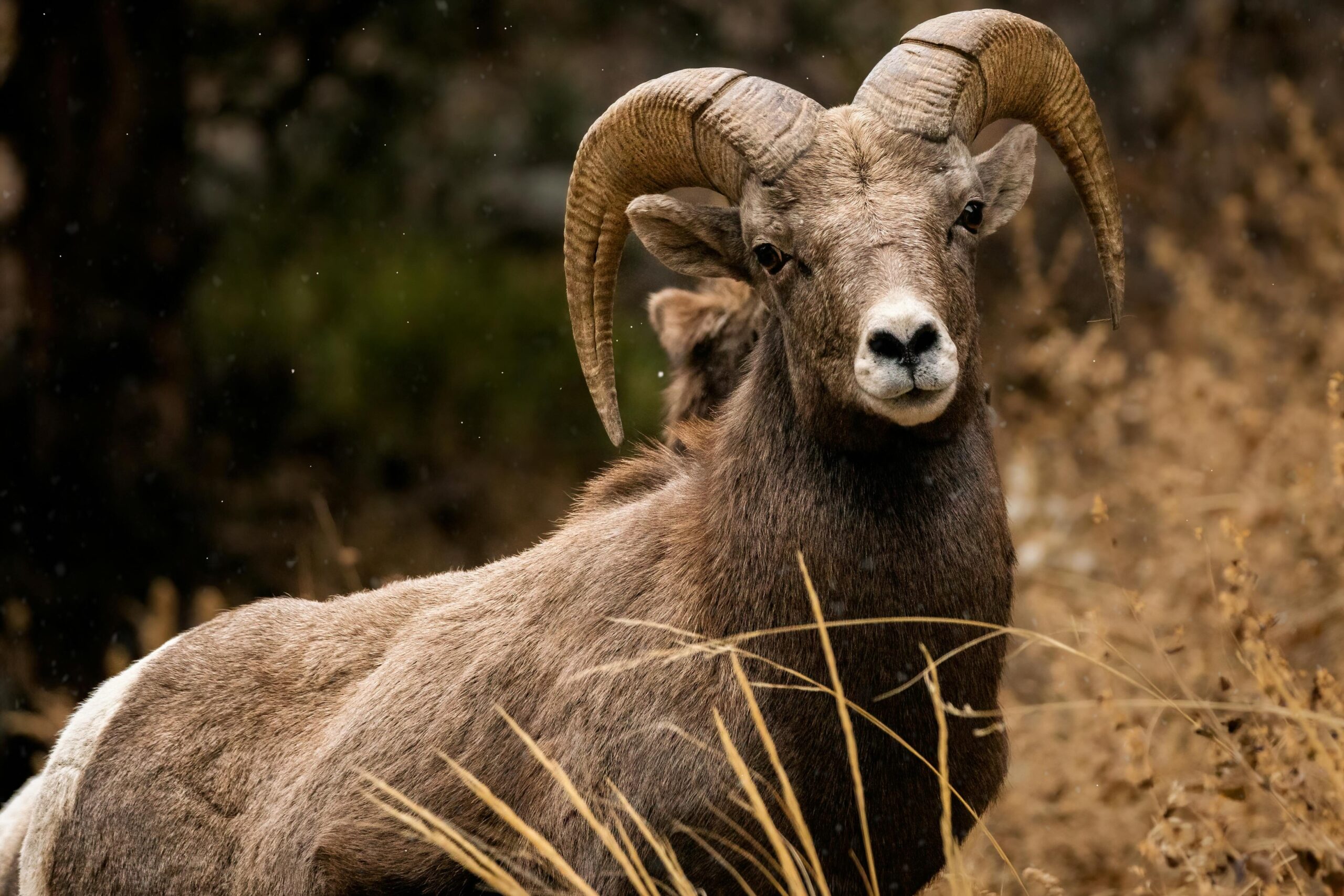
The desert bighorn sheep is a marvel of adaptation, perfectly suited for life in the rocky, arid landscapes of the American Southwest. These agile creatures can scale steep cliffs with ease, their specialized hooves providing incredible grip on even the narrowest ledges. Their impressive climbing skills help them evade predators, such as mountain lions, and reach vegetation in areas inaccessible to other animals. Males, known as rams, are famous for their dramatic headbutting battles during mating season, using their thick, curved horns as weapons in displays of dominance.
What’s truly fascinating is how desert bighorn sheep survive in such harsh conditions. They are capable of going days without water, relying on moisture from their food and strategically seeking out hidden water sources. Their social structure revolves around small herds, with rams and ewes often leading separate lives except during mating season. While they are an iconic symbol of desert life, they face challenges from habitat loss, human encroachment, and climate change. Conservation programs have been instrumental in stabilizing populations and ensuring their survival. Watching these sheep navigate rugged terrains with grace is both humbling and awe-inspiring, a reminder of nature’s extraordinary adaptability.
15. Alligator Snapping Turtle: The Underwater Ambush Predator
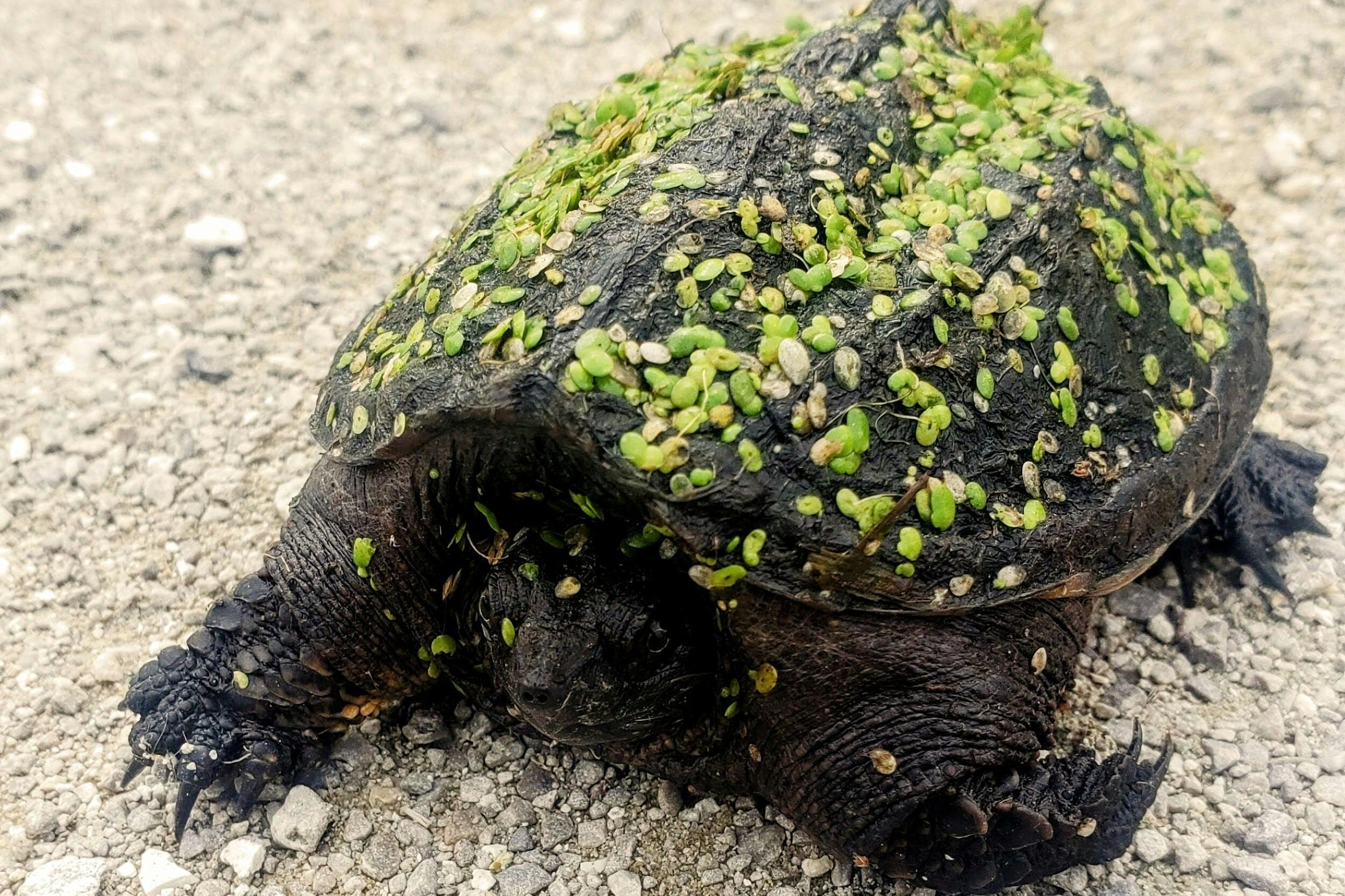
The alligator snapping turtle is one of North America’s most fascinating reptiles, known for its prehistoric appearance and unique hunting style. Found in the rivers and swamps of the southeastern United States, this massive turtle can weigh up to 200 pounds. Its rugged shell and spiked tail give it an ancient, almost mythical look, while its strong jaws can snap through bones and shells with ease. However, it’s their hunting method that truly sets them apart. These turtles are ambush predators, lying motionless underwater with their mouths wide open, wiggling a worm-like appendage on their tongue to lure unsuspecting fish.
Despite their fearsome reputation, alligator snapping turtles are relatively passive creatures, attacking only when provoked or threatened. They are crucial to their ecosystems, helping control fish populations and clean up debris as scavengers. Unfortunately, habitat destruction and overharvesting have put these turtles at risk, with many populations declining rapidly. Conservation efforts are working to protect their habitats and regulate hunting practices. Observing an alligator snapping turtle in the wild feels like a glimpse into the distant past, reminding us of nature’s creativity in shaping survival strategies. These turtles are a testament to resilience and the often-unseen complexity of aquatic life.


